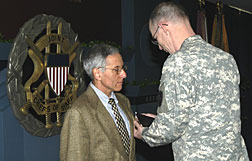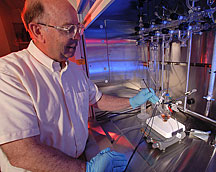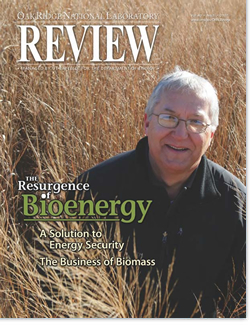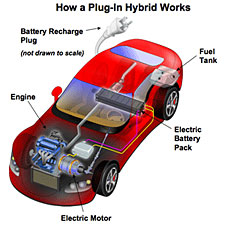| Research
|
A special Pentagon event recognized service to our nation with the highest civilian award that the Chairman of the Joint Chiefs can bestow. The recipient's name was Hriar S. Cabayan, PhD. But for a decade, everyone at the Pentagon had just called him “Doc.” He served as liaison and conduit between the DoD and DOE laboratories, other government agencies, and the Combatant Commands. Brigadier General Maurice H. "Maury" Forsuth requested that Colonel Mike Carroll, Division Chief for Joint Staff Operations, Information Operations, Operations Division, do the honors. Because much of Hriar's work was of a sensitive nature, some of his finest accomplishments went unmentioned, but nonetheless were much appreciated. Commander Todd Veazie had worked with Hriar for just over one year on the Joint Staff, “He's a humble person. But a great patriot who rises above politics to serve our troops at the front, and who will cut through any bureaucracy to get help to our war-fighters. Lots of guys are alive and enjoying life today because of what he's done.” After ten years, Hriar's memories include the 9/11 terrorist assault on the building. “I was in Corridor 8, and the aircraft struck Corridor 5. I didn't hear the impact, but I did hear the screaming and shouting as we evacuated the building,” Hriar recalled. Hriar “Doc” Cabayan received his doctorate degree from the University of Illinois in Urbana, Illinois in 1971. After four years of teaching assignments at New York and McGill Universities , he joined DOE's Lawrence Livermore National Laboratory in 1977. Initially he worked on nuclear weapons effects, Strategic Defense Initiatives related efforts, and directed-energy programs. Today he is part of the National Security Office, currently assigned to support the Office of the Secretary of Defense-Director of Defense, Research and Engineering.Submitted by DOE's
Lawrence Livermore |
|||||||||||||||||||||||||
|
Check out the Office of Science's new Website.
|
NREL research advances plug-in hybrid electric vehicles
In the 1990s, DOE's National Renewable Energy Laboratory worked to advance hybrid electric vehicles, particularly propulsion systems, building the technology's viability in the marketplace. Today, NREL is working with national labs and industry to take this concept one step further with plug-in hybrid electric vehicles. Plug-in hybrids have the potential to cut fuel consumption by more than 50 percent. But extending the life and lowering the cost of plug-in hybrid batteries is needed to advance plug-in hybrid technology for market acceptance. The larger battery pack would allow plug-in hybrids to operate predominantly on electricity for short trips. For longer trips, a liquid fuel powered internal combustion engine kicks in providing driving range and performance comparable to a conventional car. The vehicle's onboard computer chooses when to use electricity only or when to add power from the internal combustion engine. The plug-in hybrid battery can be recharged using a standard 110-volt outlet at home or even at work. "I expect that home refueling will be one of the biggest selling points for plug-in hybrids," said Tony Markel, a senior engineer with the NREL Vehicle Systems Analysis Team. "Since many drivers travel less than 30 miles per day, home refueling with electricity means they probably won't visit the gas station as often." But plug-in hybrids don't necessarily require gasoline; they can use biofuels, such as ethanol or biodiesel. For a light-duty vehicle fleet, NREL researchers estimate plug-in hybrids could reduce the per-vehicle demand for liquid fuel by more than 50 percent, making it practical to use domestically produced E85 (85 percent ethanol, 15 percent petroleum) on a national scale. The fuel cost savings with plug-in hybrids could amount to more than $500 per vehicle per year. Ultimately, the transition to plug-in hybrid technology involves the integration of many technologies under research and development at the Laboratory. Visit NREL's Vehicle Systems Analysis Web site for more information. Submitted by DOE's
National Renewable |




